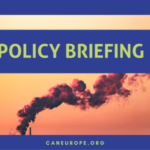
REACTION: EU’s 2040 Climate Target: A pivotal step for climate action comes at a costly compromise
EU’s 2040 Climate Target: A pivotal step for climate action comes at a costly compromise In the midst of extreme heat waves, the EU’s 2040

EU’s 2040 Climate Target: A pivotal step for climate action comes at a costly compromise In the midst of extreme heat waves, the EU’s 2040
Brussels, 26 June 2025, for immediate release – EU Member States should submit their Social Climate Plans to the European Commission by 30 June next

Debrief from UN Climate talks Bonn: Just transition progress, but EU must step up to avoid COP30 failure in Belém Bonn, 27 June 2025

📋 Download the briefing as PDF | Policy Brief: External Action in the next Multiannual Financial Framework (MFF)

CAN Europe Media Briefing: United Nations Climate Change Conference SB 62 Brussels, 12 June 2025 As the UNFCCC’s Subsidiary Bodies (SB) meet in Bonn for

Broad coalition to EU leaders: Deliver on an ambitious 2040 climate target through domestic action Brussels, 11 June 2025 Today a coalition of 126 leading

CAN Europe, Carbon Market Watch and 150 other civil society organisations, academia and businesses have written to the European Commission to express extreme concern regarding the
The European Commission recently communicated that Member States have “significantly closed the gap” toward the EU’s 2030 climate and energy targets with their final National
Brussels, 28 May 2025, for immediate release. In its today’s assessment, the European Commission claims that the updated National Climate and Energy Plans (NECPs) collectively

Brussels, 10 June 2025. As the Commission moves forward with a deregulation drive in favour of corporate interests, Climate Action Network (CAN) Europe today co-organised